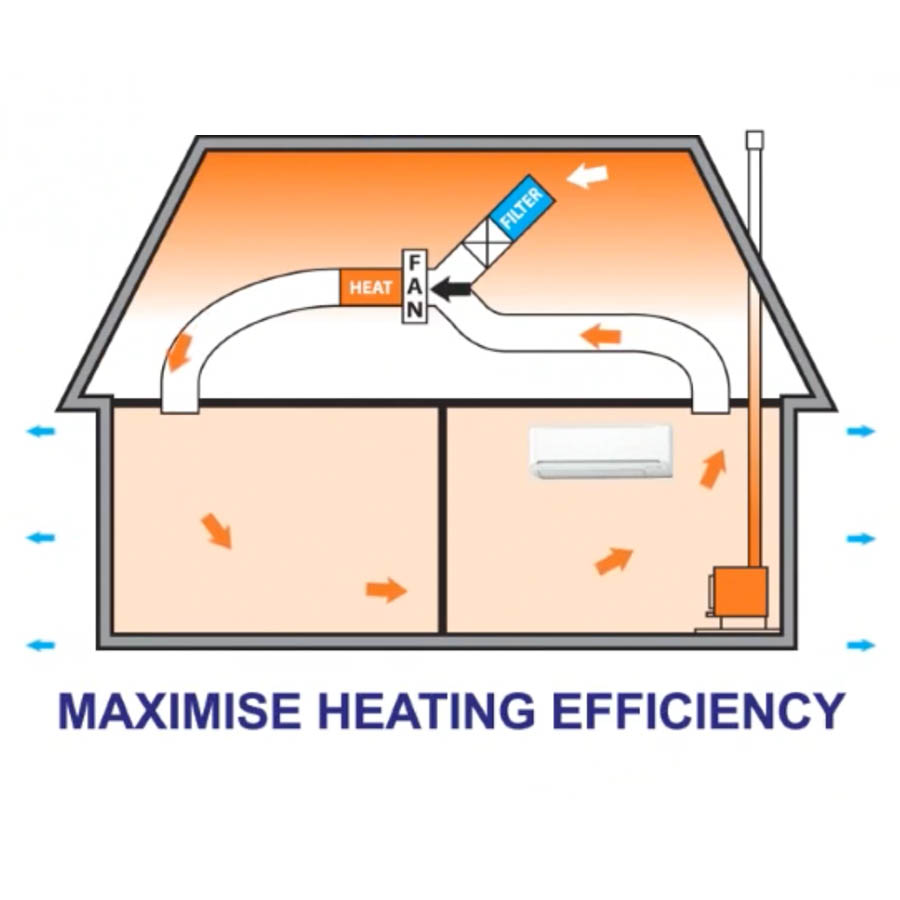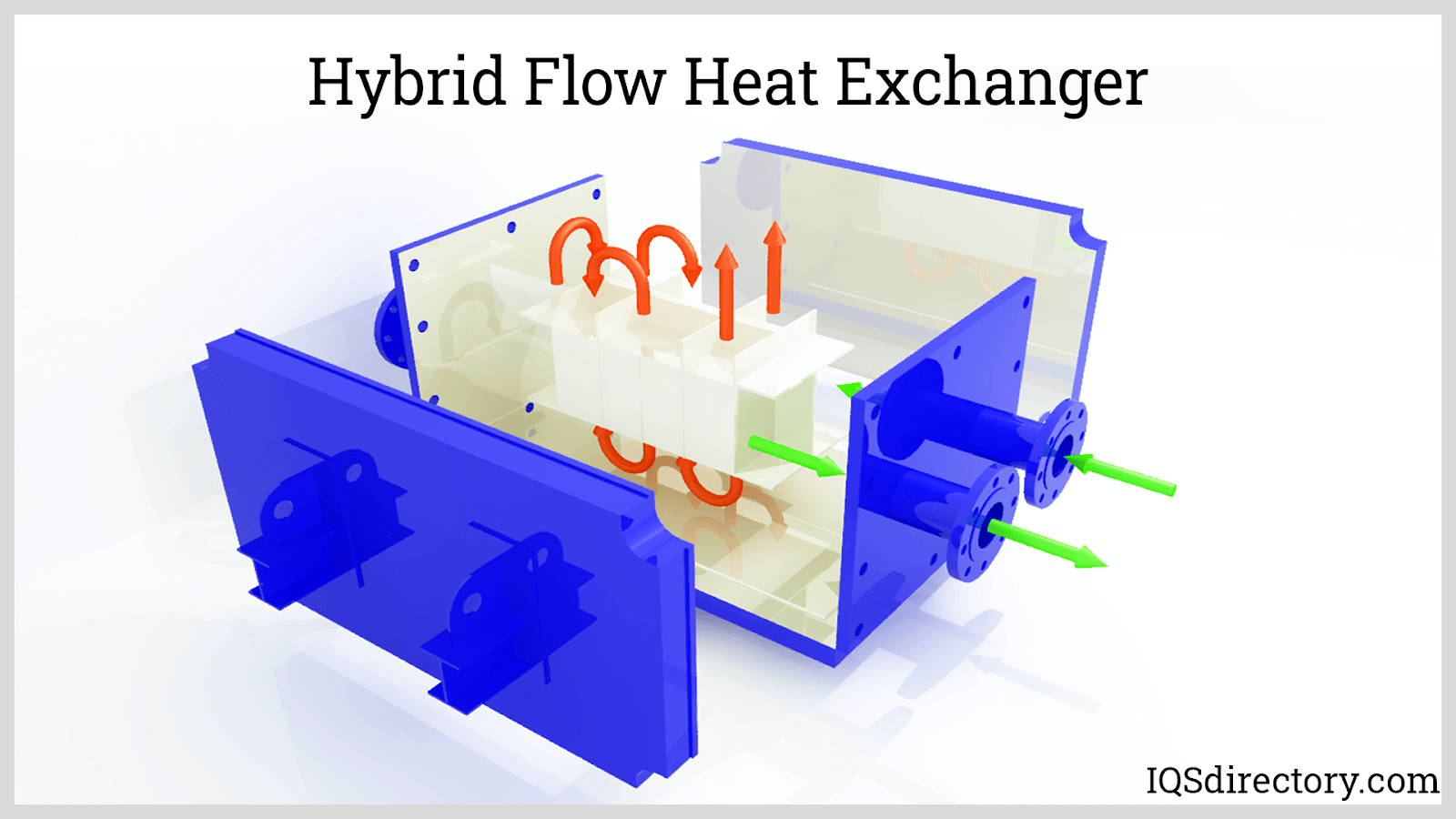DVS Heat Transfer Systems: The Future of Energy-Efficient Industrial Heating Solutions
Wiki Article
The Role of Heat Transfer Equipments in Sustainable Power Solutions for the Future
Heat transfer systems are vital in the pursuit for sustainable power solutions. They optimize thermal energy administration, improving the efficiency of renewable technologies. By employing devices like radiation, convection, and transmission, these systems reduce energy losses. Their duty in solar thermal and geothermal applications is specifically significant. As developments arise, the possibility for additional advancements elevates important questions regarding future energy strategies. What advancements will shape the landscape of lasting energy?Understanding Heat Transfer Systems

The Value of Thermal Energy Monitoring
Reliable thermal power monitoring is crucial for optimizing power performance and decreasing waste in numerous systems. By controling temperature level and enhancing Heat transfer processes, companies can markedly lower energy usage and functional prices. Effective monitoring includes the execution of advanced innovations and methods that check and manage thermal conditions within systems, guaranteeing that power sources are made use of successfully. In addition, proper thermal energy monitoring contributes to minimizing greenhouse gas emissions, straightening with international sustainability objectives. It additionally boosts system integrity and performance, bring about enhanced item high quality and longer equipment life expectancy. Ultimately, prioritizing thermal energy monitoring is an essential step in the direction of producing more sustainable energy solutions and fostering a responsible technique to power intake in household and commercial contexts.Applications of Heat Transfer in Renewable Energy
While various renewable resource resources guarantee sustainability, the effective application of Heat transfer plays a vital function in their performance. In wind energy systems, Heat transfer is made use of for turbine element cooling, boosting performance and long life. Geothermal energy counts on efficient Heat exchange in between the earth's subsurface and the fluid circulating in the system, making best use of power extraction. Biomass power procedures likewise benefit from Heat transfer, as it helps in transforming natural materials into functional fuel via pyrolysis and gasification. Furthermore, in hydropower, maintaining ideal temperature levels in storage tanks can enhance energy result. Each of these applications demonstrates the crucial importance of Heat transfer systems in boosting renewable resource technologies, eventually contributing to an extra sustainable power future.Enhancing Solar Thermal Power Performance
As solar thermal power systems remain to progress, improving their performance has actually ended up being crucial for taking full advantage of energy outcome. Advances in Heat transfer technologies, such as improved thermal storage space materials and innovative Heat exchangers, play a considerable role in improving performance. By utilizing sophisticated products that have exceptional thermal conductivity, systems can record and move Heat better. In addition, integrating radar that comply with the sun's course guarantees that collectors get ideal solar exposure throughout the day. Making use of nanotechnology in solar absorbers can even more enhance energy absorption prices. Furthermore, including automated control systems assists take care of and manage temperature levels energy circulation successfully, bring about reduced losses and improved overall system effectiveness. These enhancements lead the way for more lasting solar thermal power solutions in the future.Geothermal Heating: A Sustainable Remedy
Geothermal heating provides a sensible alternative for lasting energy, using substantial ecological benefits through reduced greenhouse gas emissions. Its performance and cost-effectiveness make it an eye-catching choice to typical furnace. Nevertheless, difficulties related to implementation should be dealt with to optimize its prospective impact.Environmental Benefits of Geothermal
Although conventional home heating approaches add considerably to greenhouse gas emissions, geothermal heating presents a compelling alternative that minimizes environmental effect. By taking advantage of the Earth's interior Heat, geothermal systems make use of a renewable resource source, considerably lowering reliance on nonrenewable fuel sources. This approach generates very little carbon emissions, making it a cleaner option for property and business home heating. In addition, geothermal systems promote energy effectiveness, as they need much less power contrasted to standard heating unit. DVS Heat Transfer Systems. The usage of geothermal power also aids in reducing air contamination, improving regional air top quality and public wellness. As a sustainable option, geothermal heating supports climate modification reduction initiatives, positioning itself as a necessary part in the change in the direction of a greener futureEffectiveness and Cost-Effectiveness
Exactly how does geothermal heating gauge up in regards to effectiveness and cost-effectiveness contrasted to traditional heater? Geothermal home heating shows premium performance, typically attaining a coefficient of efficiency (POLICE OFFICER) of 3 to 5, indicating it creates three to five units of Heat for each unit of electrical power consumed. This efficiency equates into reduced operating expense, specifically in regions with steady geothermal sources. First setup prices can be greater than traditional systems; however, lasting cost savings on power costs and decreased upkeep expenditures can counter these in advance financial investments. Furthermore, many governments incentivize geothermal systems via refunds and tax credit scores, enhancing their cost-effectiveness. On the whole, geothermal home heating becomes a sustainable and economically feasible alternative to even more standard home heating options.Implementation Obstacles and Solutions
Countless difficulties can impede the extensive execution of geothermal heating systems, despite their clear benefits as a sustainable power service. High initial installation expenses commonly discourage investors and house owners, making funding a substantial barrier. Furthermore, the geographical constraints of appropriate geothermal websites limit ease of access in particular regions. Regional guidelines and allowing processes can likewise make complex job development, bring about delays. Public recognition and understanding of geothermal systems stay reduced, hindering approval. To address these difficulties, targeted education and learning projects can boost open secret, while government motivations might reduce monetary problems. Teaming up with neighborhood authorities to streamline guidelines might promote smoother task authorizations, inevitably promoting the adoption of geothermal heating as a sensible, lasting power alternative.Innovations in Heat Transfer Technologies
Innovations in Heat transfer innovations play an important function in enhancing energy efficiency and sustainability. Advanced Heat exchangers and phase change products are at the center of these advancements, supplying significant renovations in thermal monitoring. These modern technologies not just maximize power usage but also add to lowering ecological influence try this out in numerous applications.Advanced Heat Exchangers
Advanced Heat exchangers play a vital duty in improving energy efficiency across numerous applications in sustainable power options. These gadgets help with the transfer of Heat in between 2 or more fluids, noticeably minimizing energy intake in procedures such as commercial heating, air conditioning, and power generation. Advancements in materials and layout, such as the use of nanofluids and portable configurations, have caused improved thermal performance and minimized dimension demands. Furthermore, advancements in digital tracking and control systems permit optimized operation, additional raising performance. By reducing waste Heat and maximizing energy healing, advanced Heat exchangers add to reduce carbon impacts and support the shift towards eco-friendly innovations. Their proceeded development is crucial for accomplishing worldwide energy sustainability objectives.
Stage Adjustment Materials
The combination of stage adjustment products (PCMs) into Heat transfer modern technologies represents a considerable improvement in power monitoring and effectiveness. PCMs soak up and launch thermal power during their stage changes, making it possible for effective temperature guideline in structure materials and power systems. By keeping excess Heat throughout peak periods and releasing it when demand boosts, PCMs add to fill changing and power conservation - DVS Heat webpage Transfer Systems. This ability enhances the performance of sustainable power systems, specifically in solar thermal applications. Furthermore, PCMs can enhance the thermal convenience of indoor environments, lowering reliance on standard heating and cooling down techniques. As developments in PCM formulations remain to emerge, their duty in sustainable power remedies is poised to grow, offering promising methods for future study and application
Future Leads for Heat Transfer in Sustainable Power
As the need for sustainable energy solutions remains to rise, the role of Heat transfer systems is becoming progressively crucial in shaping future technologies. Developments in styles and materials are anticipated to enhance efficiency in Heat transfer, minimizing power losses in numerous applications. The assimilation of innovative thermal storage space systems, such as phase modification materials and thermochemical storage, will certainly allow far better management of power sources. Study right into nanofluids wikipedia reference and biomimetic Heat exchangers may even more enhance thermal performance. The fostering of clever innovations will certainly enable for real-time tracking and adaptive control of Heat transfer processes. These developments are positioned to significantly contribute to the overall effectiveness and sustainability of power systems, leading the method for a much more energy-efficient future.Frequently Asked Inquiries
Just How Can People Carry Out Heat Transfer Systems in the house?

Individuals can implement Heat transfer systems in your home by installing energy-efficient appliances, using radiant heat, and enhancing insulation. These measures boost power effectiveness, reduce prices, and promote lasting practices in property environments.

What Are the Expenses Related To Installing Heat Transfer Systems?
The costs connected with installing Heat transfer systems differ extensively, generally encompassing equipment, installation labor, and maintenance. Aspects such as system kind, home size, and local regulations greatly influence the total expenditure involved.Exist Federal Government Motivations for Heat Transfer System Installations?
Government incentives for Heat transfer system installations vary by area and can consist of tax obligation grants, discounts, and debts. These financial benefits intend to encourage fostering, ultimately advertising energy efficiency and minimizing environmental influence within neighborhoods.How Do Heat Transfer Solutions Influence Energy Bills?
Heat transfer systems significantly influence power bills by enhancing energy effectiveness. By improving the transfer of Heat, these systems lower energy usage, resulting in reduced utility prices and producing a more lasting approach to energy monitoring.What Maintenance Is Needed for Heat Transfer Solutions?
Upkeep for Heat transfer systems includes routine examinations, cleansing of parts, checking fluid degrees, making certain proper insulation, and replacing worn parts. These tasks assist keep performance, prevent failures, and prolong the system's functional life-span.These systems assist in the activity of thermal energy from one tool to an additional, enabling the transfer of Heat for heating, air conditioning, or energy generation functions. Geothermal energy depends on reliable Heat exchange between the planet's subsurface and the liquid flowing in the system, making best use of energy removal. In addition, geothermal systems advertise power efficiency, as they need less energy contrasted to standard home heating systems. Advanced Heat exchangers play an important duty in enhancing energy effectiveness across various applications in lasting power options. Heat transfer systems especially affect power costs by maximizing power performance.
Report this wiki page